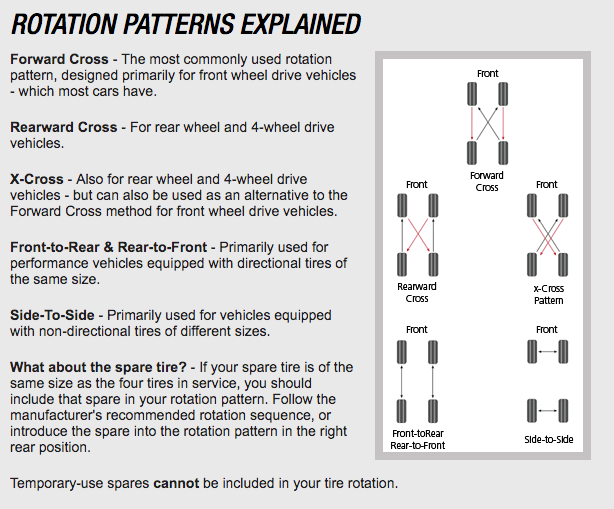I've been taught (at some point) that when switching tires, you should take care to keep each tire on the same side of the car throughout its life. So if a tire starts its life at rear left, then moving it to front left is okay, but moving it to the right side (either front or rear) is a bad thing. Presumably this is due to the direction of rotation; taking a left-hand tire and putting it on the right-hand side of the car, or the other way around, without taking additional steps, would reverse its direction of rotation.
Yet, this highly voted answer to Tire blew out at 15K miles, should I replace just one tire or a pair by a high-rep user includes the following (un-sourced) graphic showing "recommended" tire change patterns:
This seems to indicate that moving tires between sides of a vehicle is not only acceptable, but outright encouraged.
What gives? Is moving tires between sides of a vehicle good or bad, and why?
Let's assume that the steering is balanced, so that there is no significant uneven wear on the respective sides which would require special consideration.


